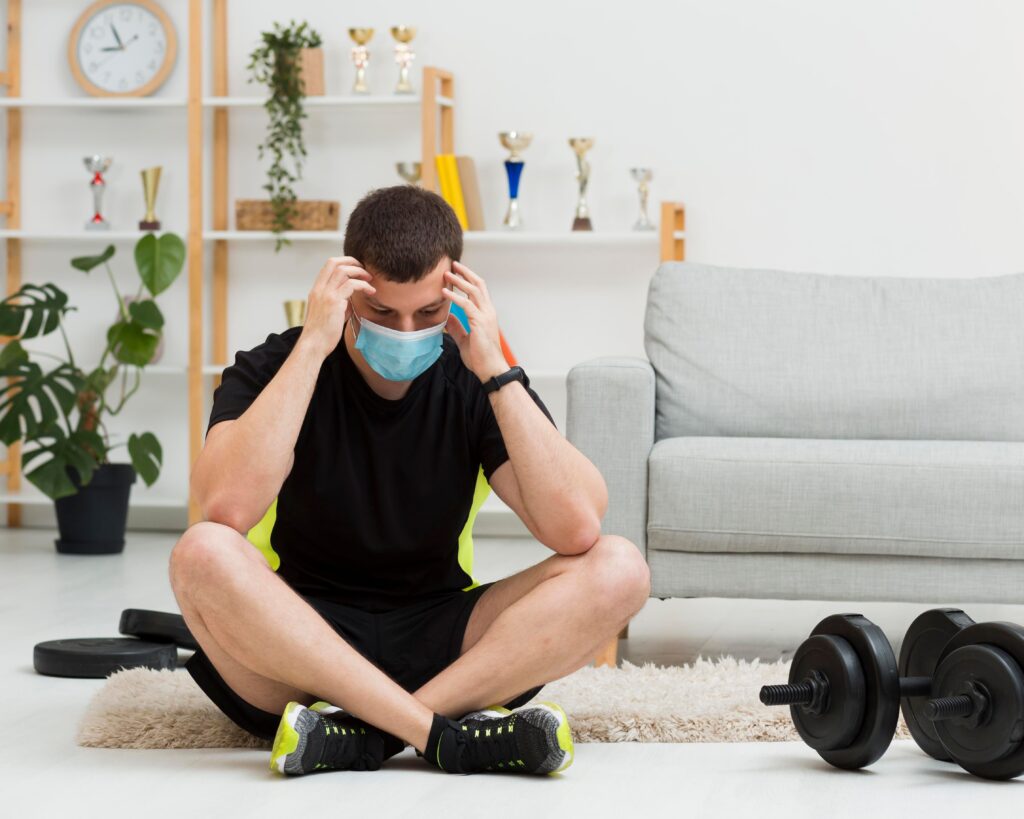The COVID-19 pandemic changed dramatically many aspects of living every day, together with a shift in how most think about fitness and workout routines. People turned to alternative ways of keeping themselves active and healthy upon the emergence of the COVID-19 coronavirus, coupled with the closing of gyms and the need to maintain social distancing. This article gives details on the effect of the COVID-19 coronavirus on fitness, adjusting your workout routine, and new trends in fitness during the pandemic.

The Impact of the COVID-19 Coronavirus on Fitness
The COVID-19 pandemic made the different governments of the countries enforce far-reaching gym closures, which compelled a great many movers to switch to home workouts. This has been riddled with challenges but has also opened up new opportunities for fitness enthusiasts.
Shifts from Gyms to Home Workouts
Gyms were closed, and therefore most of the population resorted to home workouts to stay in shape. The shift demanded creativity and flexibility since not everybody had similar equipment used at the gym.
The Rise of Virtual Fitness Classes
Virtual fitness classes were super popular during the pandemic. From yoga and pilates classes to HIIT, platforms like Zoom, YouTube, and fitness apps provide everything. These virtual classes have provided a community feeling and driven motivation while people are physically far away from each other.
The Role of Technology in Fitness
Technology played a huge role in keeping many people fit during the pandemic. Fitness applications, wearable devices, and online workout programs are essentially useful in tracking progress, setting goals, and helping to keep individuals motivated.
Impact on Mental Health
The pandemic has been rough on mental health, and exercise has become a much-needed outlet to channel stress. Plenty of evidence exists showing how physical activity leads one to the production of endorphins, which help alleviate stress and bring about positive moods. Working out during the COVID-19 pandemic was hence not only for the sake of physical health but also for mental well-being.
Adapting Your Workout Routine
One should thus be able to adapt the workout routine to this new normal. The following are tips to keep you up and about, active and fit during the COVID-19 pandemic.
Tips for Setting Up a Home Gym
Having your workout area in your home will help in keeping you motivated to exercise. This should have, at the very least, the following:
- Dumbbells or resistance bands for strength training
- A Yoga mat for stretching and floor exercises
- A Jump rope for cardio exercises
- Space to move around comfortably.
Creating a Balanced Workout Routine
Design a workout that has an overall balance: cardio, strength training, and flexibility. Here’s how such a workout plan may look:
- Warm-up: 5-10 minutes with light cardio from jumping jacks or brisk walking.
- Strength Training: Do push-ups, squats, and lunges for 3 sets of 10-12 reps.
- Cardio: Running, biking, or HIIT for 20-30 minutes.
- Flexibility: Stretching or yoga, 10-15 minutes.
Incorporating Variety
Exercising differently every time by incorporating different varieties of workouts will keep one interested in continuing to work out efficiently without getting bored. It could be in the form of dance workouts or even martial arts. Online challenges from friends could also be a good way of mixing things up.
Virtual Fitness: Pros and Cons
The rise of the pandemic saw the norm set for virtual fitness classes. Following are some of the pros and cons associated with virtual fitness.
Benefits of Virtual Fitness Classes
- Convenience: You can work out in the comfort of your home whenever you feel like it.
- Variety: Classes range from beginners to advanced levels and encompass various styles of fitness.
- Community: Even though you might be physically far apart, there is a sense of community and camaraderie in virtual classes.
Challenges of Virtual Fitness
- Lack of Personal Interaction: Virtual classes lack personal touch and immediate feedback from instructors.
- Technical Problems: Connectivity issues and other technical problems can hamper your exercise.
- Availability of Equipment: Not everyone has the same equipment at home. Hence, this may limit the various exercises done.
Innovative Fitness Trends During the Pandemic
The pandemic has resulted in various trendy fitness ideas that have inspired several people to stay active and fit.
Outdoor Workouts
It’s becoming very popular to exercise outdoors because people would like some fresh air and a change of scenery. Parks and open spaces now play host to many group workouts, socially distanced exercise classes, and solo fitness routines.
Fitness Apps and Wearable Technology
Fitness apps and activity trackers are extremely popular. Each one of them supports the monitoring of progress, attainment of fitness goals, and motivation. Many of them provide personalized workout plans and consultation on nutrition, coupled with communities that support, inspire, and motivate each other.
Mindfulness and Holistic Health
The pandemic has also highlighted mental health and boosted the demand for mindfulness practices such as meditation, deep breathing exercises, and holistic health approaches interlinking physical and mental well-being.
Mental Health and Fitness During the Pandemic
Exercising during the pandemic will help your mental health. Here are some tips to keep you moving, motivated, and positive:
Staying Motivated
Setting realistic fitness goals and monitoring progress helps in keeping oneself motivated. Joining virtual fitness groups and working out as part of online challenges can assist in holding oneself accountable.
Exercise and Mental Health
Exercise acts as a powerful tool in managing stress and anxiety. It helps in the reduction of symptoms associated with depression and improves mental health in general. Know why it is important to exercise every day.
Safety and Health Precautions
Several safety and health precautions need to be taken while one works out during a pandemic.
Safe Outdoor Workouts
While working out outdoors, abide by the local rules and regulations for social distancing and mask-wearing. Areas with fewer crowds should be chosen, and train at times when it is not too busy to reduce contact.
Hygiene Practices
Hygiene is another aspect that needs attention during workouts. Make sure that all equipment is properly sanitized before and after each workout and that you wash your hands regularly. Avoid touching your face in the middle of your workout.
Avoiding Injuries
Always warm up before any workout; this will help you avoid injuries. Observe proper form and technique, most especially when you try new exercises or increase intensity.
Nutrition and Wellness
The key to keeping up with your fitness regimen is nutrition. Here are some tips on how to maintain a healthy diet during the pandemic.
Healthy Eating Tips
Plan your meals with a mix of key nutrients. Incorporate whole foods—fruits, vegetables, lean proteins, and whole grains. Avoid processed foods and all sugary snacks.
Importance of Hydration
Drink enough water during the day. Proper hydration is important for peak performance in general health, too.
Rest and Recovery
Adequate Rest and Recovery: Getting enough rest is an integral part of a healthy workout regime. Ensure that you get enough sleep each night and that rest days are a part of your workout regime to allow your body time to recover.
Insights from Professionals
Fitness instructors and wellness professionals modified their routines and shared some nuggets of wisdom. They underline the importance of consistency, realistic goals, and having fun through movement.
Conclusion
While the COVID-19 pandemic has truly changed how we approach our fitness, there are ways to adjust our routines using the resources available to enable ourselves to continue looking after our bodies and minds. Stay active, stay safe, and most of all, stay motivated. For more information and support, check the resources on offer and connect with the online fitness community.











